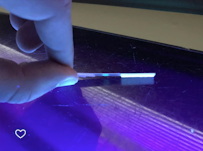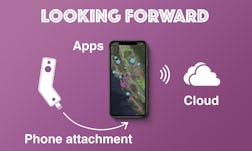NanoBuddy: Tactile Biosensor
Speculative design + research + prototyping











This conceptual project was done in collaboration with Kyle Krueger, BoPan Ni, and Shailajah Chadha at UC Davis in conjunction with the BioDesign Challenge in 2019.
The Nanobuddy project was part biodegradable industrial design, part tactile tech, part citizen science. The embedded biosensor prototype tested light sensitivity detecting color change in lateral assay's detection of specific toxins. Future goals are to translate the sensor response to shape-changing material to provide a tactile sensor for individuals visually impaired.
The exterior "looks like" shell was modeled based on assumptions of smaller hardware available in the near future. Future goals are to 3D print the enclosure with biodegradable composites combining bioplastics with mycelium to create a water-resistant, sustainable material.
Citizen science applications included remote sensing technology that can be uploaded to an online map that communicates to community participants water quality data in tested locations.
The Nanobuddy project incorporated multiple cellulose test strips, embedded with llama nanobodies, engineered to detect an assortment of harmful toxins found in water—our "nanobuddies" to help detect clean water.